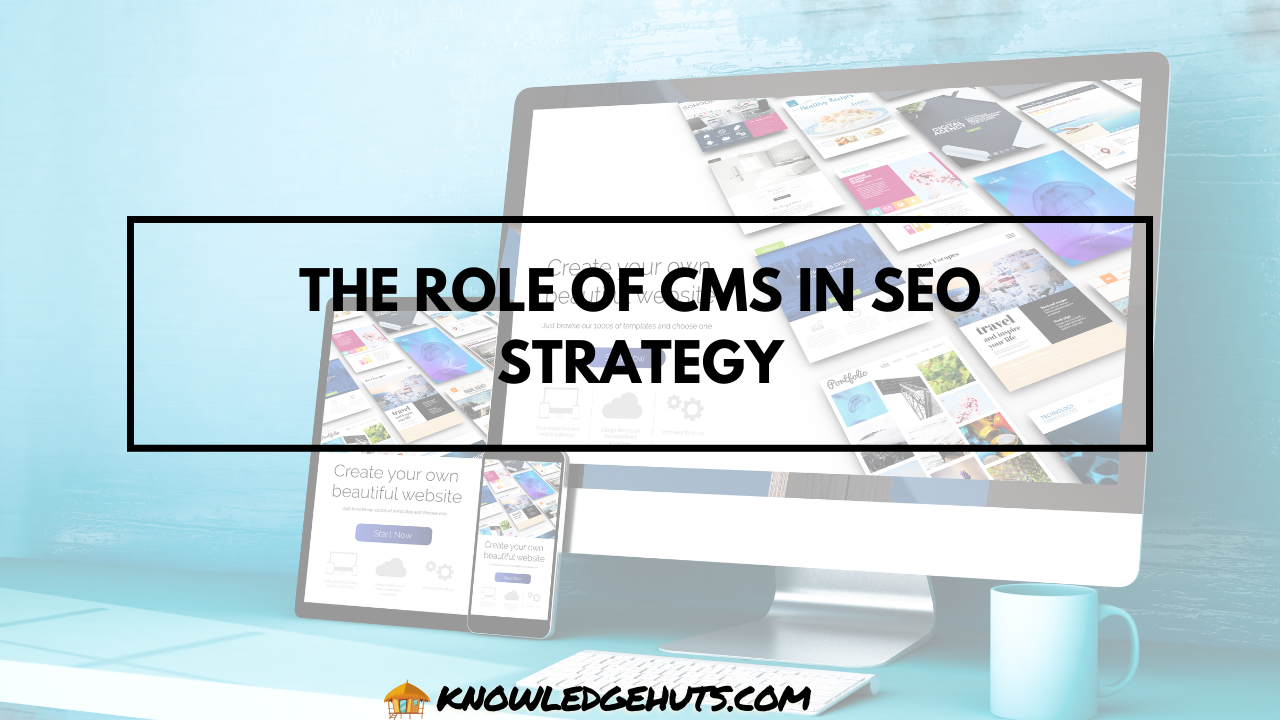In the competitive world of email marketing, the subject line is your first chance to make an impression. It’s the gateway to higher open rates and, ultimately, increased engagement with your content. A compelling subject line can mean the difference between your email being opened or ignored. In this blog post, we’ll explore strategies, tips, and best practices for Crafting Compelling Subject Lines that grab attention and boost open rates. By the end, you’ll have a toolbox of effective techniques to improve your email campaigns.
Why Subject Lines Matter
The subject line is often the first—and sometimes the only—thing a recipient sees when your email arrives in their inbox. Studies show that 47% of email recipients open an email based solely on the subject line, while 69% of recipients report emails as spam based solely on the subject line. These statistics highlight the importance of crafting subject lines that not only pique interest but also build trust and avoid misleading tactics.
The Psychology Behind Great Subject Lines
Successful subject lines tap into psychological triggers that prompt people to act. Here are a few principles behind why certain subject lines work:
- Curiosity: A subject line that creates curiosity will make the reader want to know more.
- Urgency: Emails with subject lines that convey urgency are more likely to get opened because people don’t want to miss out.
- Personalization: Adding a personal touch, like the recipient’s name, makes the email feel more relevant and increases open rates.
- Fear of Missing Out (FOMO): Subject lines that suggest limited availability can create a sense of urgency.
Characteristics of Effective Subject Lines
Understanding what makes a subject line effective is crucial for boosting open rates. Below are some characteristics of high-performing subject lines:
| Characteristic | Description |
|---|---|
| Clarity | Clear and concise subject lines give the recipient a reason to open. |
| Curiosity | Subject lines that provoke curiosity entice users to click. |
| Urgency | Using time-sensitive words motivates readers to act quickly. |
| Relevance | The subject line should be relevant to the recipient’s interests. |
| Brevity | Keeping subject lines short improves readability and engagement. |
Types of Subject Lines That Increase Open Rates
There are several types of subject lines that consistently perform well across industries and audiences. Let’s explore some of the most effective ones:
1. Curiosity-Driven Subject Lines
These subject lines pique the reader’s curiosity by hinting at something valuable inside the email but not revealing everything. Examples include:
- “You won’t believe what’s inside!”
- “The secret to [desired outcome] revealed…”
The curiosity factor increases open rates because people feel compelled to know more. However, it’s essential to deliver on the promise inside the email. If the content doesn’t match the subject line, it can erode trust and increase unsubscribe rates.
| Subject Line | Open Rate (%) | Effectiveness |
|---|---|---|
| “This one thing will change your life…” | 35% | High |
| “Guess what we’ve got for you inside?” | 30% | Moderate |
| “What’s the best way to solve [problem]?” | 28% | High |
2. Personalized Subject Lines
Adding personalization to your subject lines, such as the recipient’s first name or a reference to their preferences, can lead to higher open rates. Personalization helps to make the email feel more tailored and relevant to the reader.
- “John, here’s a special offer just for you!”
- “Only for you: [Discount/Offer] inside.”
According to studies, personalized subject lines can increase open rates by 26%. However, over-personalization or inappropriate personalization can backfire, so it’s crucial to use this strategy judiciously.
3. Urgency and FOMO Subject Lines
Creating a sense of urgency or FOMO (Fear of Missing Out) is one of the most powerful motivators for increasing open rates. Subject lines that suggest limited availability, such as exclusive offers or time-sensitive deals, can drive immediate action.
- “Hurry! Only 24 hours left to claim this offer.”
- “Last chance to save 50% on your order!”
Urgency works because people don’t want to miss out on opportunities, and by setting a deadline, you push them to take immediate action. Emails with urgency-focused subject lines tend to have higher open rates, particularly for promotions and sales.
| Subject Line | Open Rate (%) | Effectiveness |
|---|---|---|
| “Flash sale ends tonight—don’t miss out!” | 40% | High |
| “Limited time offer: 50% off expires soon!” | 38% | High |
| “Act now! Only a few items left in stock.” | 34% | Moderate |
4. Question-Based Subject Lines
Asking a question in the subject line can make your reader think and engage their curiosity. This type of subject line often works well because it invites the reader to open the email to discover the answer or solution.
- “Do you want to know how to boost your savings?”
- “What’s holding you back from success?”
Question-based subject lines encourage engagement by prompting a mental response. However, the questions should be relevant to the recipient’s interests to be effective.
| Subject Line | Open Rate (%) | Effectiveness |
|---|---|---|
| “Ready to start your journey?” | 32% | High |
| “How can we help you improve your skills?” | 30% | Moderate |
| “What’s your next big goal?” | 28% | High |
5. Humorous or Playful Subject Lines
Humor can be a great way to stand out in the inbox and make the recipient smile. Playful subject lines that don’t take themselves too seriously can help build rapport with your audience.
- “Oops, did you forget something in your cart?”
- “Are you ready for this awesomeness?”
While humor works well for some brands, it’s essential to consider your audience and the context. Not all industries or demographics will respond positively to a light-hearted tone, so use this strategy when it aligns with your brand’s voice.
The Role of A/B Testing in Crafting Subject Lines
A/B testing, also known as split testing, is an essential tool for refining your subject lines. By testing two different subject lines on small portions of your audience, you can determine which one performs better before sending the email to the entire list.
For example, you could test a curiosity-driven subject line against a personalized one to see which yields a higher open rate. Over time, you’ll gain valuable insights into what resonates best with your specific audience.
| Test Group | Subject Line | Open Rate (%) |
|---|---|---|
| Group A | “Unlock the secret to [desired outcome] inside!” | 28% |
| Group B | “[First Name], here’s your exclusive offer” | 35% |
A/B testing is not a one-time event; it should be an ongoing process to continually optimize your subject lines. Additionally, you can test other elements such as emojis, length, or word choice to further improve your email performance.
Avoiding Common Mistakes in Subject Lines
While it’s important to experiment with your subject lines, certain pitfalls can harm your open rates and damage your brand’s reputation. Here are some common mistakes to avoid:
1. Overpromising or Misleading
Never promise something in the subject line that isn’t delivered in the email content. Misleading subject lines may increase open rates temporarily, but they lead to higher unsubscribe rates and diminished trust.
2. Too Lengthy
Subject lines that are too long can get cut off in mobile inboxes, and recipients may not see the full message. Ideally, subject lines should be no more than 50 characters to ensure they are fully visible.
3. Using All Caps or Excessive Punctuation
Emails with subject lines that use all caps or excessive punctuation (e.g., “ACT NOW!!!”) can come across as spammy and turn readers away. While urgency is important, it should be conveyed with professionalism.
| Common Mistake | Example | Why It’s Ineffective |
|---|---|---|
| Overpromising | “Lose 20 pounds in one week with this product!” | Misleading claims damage credibility |
| Subject Line Too Long | “Discover the five ways to improve your business in 2023 and beyond!” | Gets cut off in most inboxes |
| Excessive Punctuation/All Caps | “LAST CHANCE!!! OPEN NOW!!!” | Appears spammy and unprofessional |
Strategies for Writing Compelling Subject Lines
Now that you know what works and what doesn’t, let’s explore a step-by-step guide to writing compelling subject lines.
1. Know Your Audience
Understanding your audience’s preferences, pain points, and motivations is the foundation of writing effective subject lines. The more you know about what your subscribers want, the better you can tailor your subject lines to their interests.
2. Keep It Short and Sweet
Studies show that subject lines with fewer than 50 characters tend to perform better. Keep your subject lines brief but impactful. Focus on conveying value in as few words as possible. Aim to get straight to the point without over-explaining. This not only makes the subject line more readable but also ensures it won’t be cut off in mobile inboxes.
Examples of concise subject lines:
- “Limited-time offer: Save 30% now!”
- “Your exclusive deal inside”
- “Ready for an upgrade?”
These examples are short, to the point, and clearly convey the value of opening the email.
3. Use Action-Oriented Language
Encourage the reader to take action by using strong verbs in your subject lines. Words like “Discover,” “Unlock,” “Get,” or “Claim” create a sense of urgency and prompt the recipient to engage with the content inside the email.
Examples:
- “Unlock your special discount today”
- “Claim your free eBook now”
- “Get the best deals of the season”
Action-oriented language not only increases open rates but also sets the stage for a higher click-through rate within the email itself.
4. Create a Sense of Urgency
As mentioned earlier, urgency is a powerful psychological trigger. Phrases like “limited time,” “only a few left,” or “expires soon” push people to act quickly, increasing your chances of immediate engagement. However, be careful not to overuse urgency in every email, as it can lose its effectiveness over time.
Examples of urgency-based subject lines:
- “Only 24 hours left to save!”
- “Flash sale ends tonight!”
- “Act now—limited spots available!”
Urgency encourages the recipient to prioritize your email over others, leading to higher open rates.
5. Personalize When Possible
People respond better to emails that feel relevant to them. Adding a personal touch, such as the recipient’s name, or referencing their past purchases or behavior, can increase the likelihood of your email being opened.
Examples of personalized subject lines:
- “Sarah, we’ve picked something special for you!”
- “John, here’s your exclusive invite”
- “You’ve been selected for an exclusive offer”
Research shows that personalized subject lines are 26% more likely to be opened than generic ones. However, don’t overdo it—make sure your personalization feels natural and adds value.
6. Use Numbers and Lists
Subject lines that contain numbers or suggest a list of valuable tips or resources tend to perform well. Numbers stand out in an inbox full of text and give the recipient a clear idea of what they will get from the email.
Examples:
- “5 easy ways to save on your next purchase”
- “10 tips for boosting your productivity”
- “3 secrets to a successful business”
These types of subject lines make your email seem more digestible and promise specific, actionable information.
| Type of Subject Line | Example | Expected Open Rate (%) |
|---|---|---|
| Urgency-Based | “Last chance to get 50% off!” | 35% |
| Personalized | “Chris, we have a special offer just for you!” | 30% |
| Number/List | “7 reasons to try our service today” | 32% |
| Short and Concise | “Exclusive deal for you—click now” | 28% |
7. Test Different Formats
Different audiences respond to different formats, so it’s important to test a variety of subject lines. Try experimenting with emojis, questions, and varying lengths. By A/B testing your subject lines, you can discover what resonates best with your audience and optimize for higher open rates.
Examples of different formats:
- Emoji: “🚀 Ready to boost your productivity?”
- Question: “Do you want to save on your next order?”
- Time-Sensitive: “This deal expires in 24 hours—act now!”
Testing multiple formats will help you refine your approach over time, leading to better results.
The Role of Emojis in Subject Lines
Emojis can add a visual element to your subject line, making it stand out in a crowded inbox. However, they must be used thoughtfully and in moderation. When used appropriately, emojis can help convey emotion, urgency, or excitement.
Examples:
- “🎉 Congratulations! You’ve unlocked an exclusive offer”
- “🚨 Last chance! Sale ends today”
- “🎁 Your gift is waiting—open now”
However, overusing emojis or using them inappropriately can make your emails look unprofessional. The key is balance—use emojis that align with your message and audience.
| Emoji Used | Subject Line | Open Rate (%) |
|---|---|---|
| 🎉 | “🎉 Celebrate with us—50% off today only” | 29% |
| 🚀 | “🚀 Ready for your business to take off?” | 27% |
| 💡 | “💡 How to improve your business in 2024” | 25% |
Common Pitfalls to Avoid
While crafting compelling subject lines is essential, it’s equally important to avoid common pitfalls that can harm your open rates. Here are some mistakes to watch out for:
1. Clickbait Tactics
Using misleading or clickbait subject lines may get your email opened, but it damages trust and leads to higher unsubscribe rates. If your subject line doesn’t match the content inside the email, recipients are unlikely to engage with your future emails.
2. All Caps and Excessive Punctuation
Subject lines written in all caps with multiple exclamation points can appear spammy and unprofessional. Avoid phrases like “ACT NOW!!!” or “HURRY!!!” which may turn off your audience.
3. Ignoring Mobile Users
More than half of emails are opened on mobile devices, so it’s critical to optimize your subject lines for mobile. Make sure your subject lines are short enough to be fully visible on smaller screens, or risk losing potential opens.
4. Generic or Boring Phrasing
Subject lines that are too vague or generic won’t catch attention. For example, “Monthly Newsletter” or “Important Update” doesn’t offer enough incentive to open the email. Make sure your subject lines are specific and promise something of value to the reader.
| Common Pitfall | Example | Why It Fails |
|---|---|---|
| Clickbait | “Get rich overnight—read inside!” | Misleading and damages trust |
| All Caps and Punctuation Overload | “LAST CHANCE TO SAVE!!!!” | Appears spammy and unprofessional |
| Too Generic | “Newsletter Update” | Doesn’t provide any clear value or incentive |
| Not Mobile-Friendly | “Get 50% off all items in our store before time runs out” | Too long and gets cut off in mobile inboxes |
Conclusion
Crafting compelling subject lines is an art and a science. By focusing on clarity, brevity, relevance, and the psychological triggers that prompt action, you can dramatically increase your email open rates. Experiment with different formats, test what resonates with your audience, and avoid common mistakes like clickbait or overly lengthy subject lines.
With the right strategies in place, your email marketing efforts can see substantial improvements in engagement, leading to higher conversions and better results overall. By understanding your audience, delivering on the promises made in your subject lines, and continuously refining your approach, you’ll be well on your way to mastering the art of crafting compelling subject lines for higher open rates.








